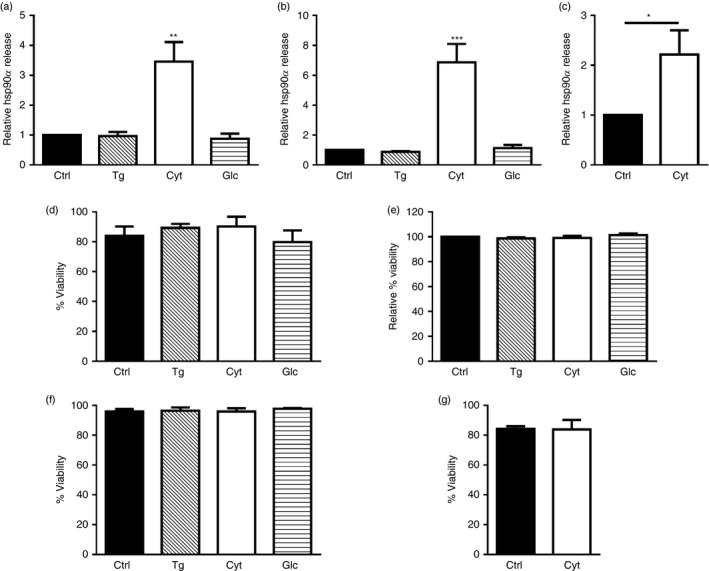Figure 1.

Heat‐shock protein 90α (hsp90α) was released by human beta cells in response to cytokine stress. Human beta cell lines βLox5 (a) and 1.1B4 (b) were treated for 24 hr with media alone (Ctrl); thapsigargin (Tg); interleukin 1β (IL‐1β), tumour necrosis factor‐α (TNF‐α), and interferon‐γ (IFN‐γ (Cyt); or culture media containing 33·3 mm glucose (Glc), while primary human islets were treated 24 hr with pro‐inflammatory cytokines only (c). Extracellular hsp90α released into the culture media was detected by ELISA. Data for extracellular hsp90α release are presented as relative to cells cultured under control conditions. Hsp90α values were detected between 0·7–4·9 ng/ml for βLox5, 0·9–6·4 ng/ml for 1·1B4, and 0·9–20·1 ng/ml for human islets. Changes in cell viability (%) were determined by trypan blue exclusion for βLox5 cells (d), 1·1B4 cells (f), or human cadaveric islets (g). Plasma membrane integrity or leakiness was monitored by detecting cellular release of cytoplasmic lactate dehydrogenase, and calculated as a relative value comparing cells cultured under control or stress conditions (e). Data are mean + SEM of n = 3 experiments or n = 4 islet donors. *P < 0·05, **P < 0·01, ***P < 0·001.
